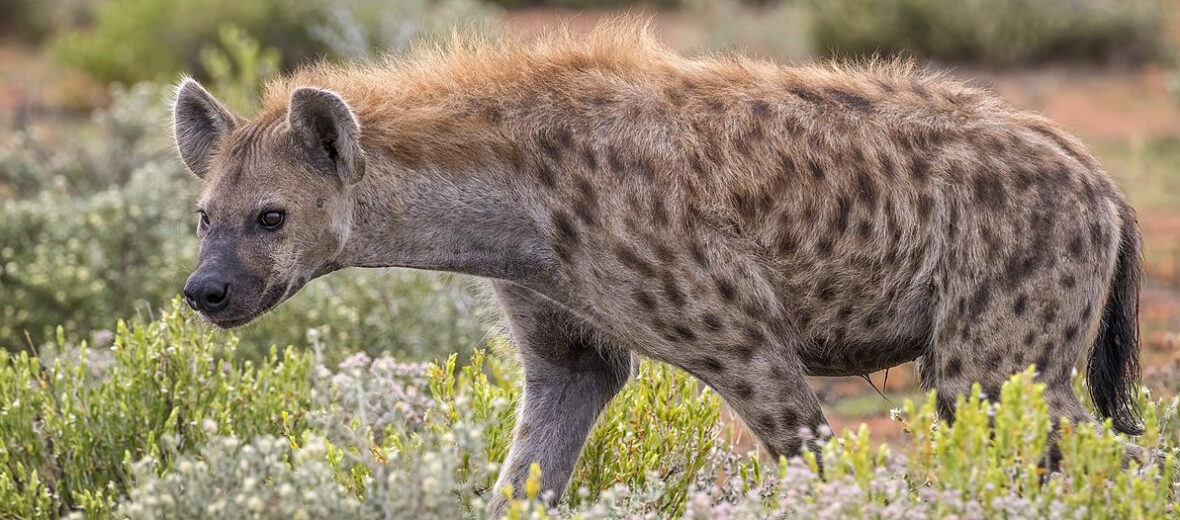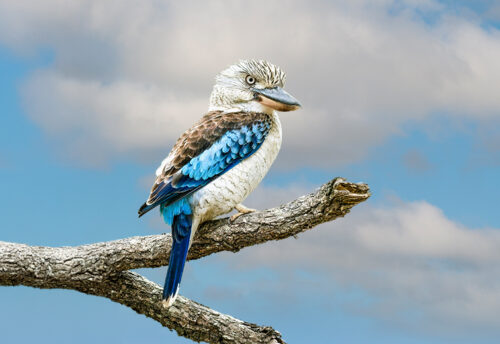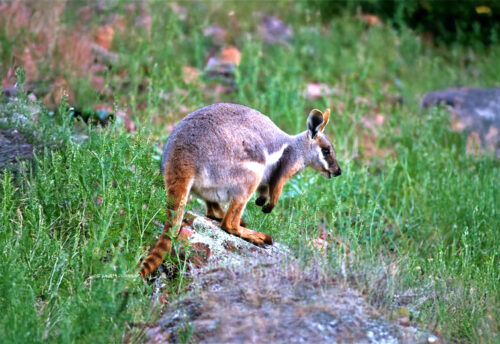
The spotted hyena, aka laughing hyena, can be found throughout sub-Saharan Africa. Their habitats include: open and dense dry woodland, grasslands, savannas, mountains, tropical rainforests, semi-deserts, and coastal areas. Even though they are hunted and trapped regularly – despite being protected, they are still abundant and listed as Least Concern by the IUCN. Their populations are decreasing though.
First the Stats…
Scientific name: Crocuta crocuta
Weight: Up to 141 lbs.
Length: Up to 5.4 feet, plus up to a 14 inch tail
Height: Up to 3 feet, at the shoulders
Lifespan: Up to 40 years
Now on to the Facts!
1.) While typically being thought of as shy and even cowardly, these critters are quite intelligent and have a fascinating social structure.
2.) Even though they resemble canines, they are more closely related to civets, genets, and cats.
3.) Spotted hyenas are the largest member of the hyena family.
4.) Both males and females possess anal glands that create a creamy, whitish secretion that is rubbed onto grass stalks by everting the rectum.
5.) The odor from these secretions is likened to the smell of burning or boiling soap and can be smelt from several feet away.
But wait, there’s more on the spotted hyena!
6.) Spotted hyenas have the intelligence of some primates.
7.) They are predominantly nocturnal (active at night).
Did you know…?
These hyenas can run at speeds of up to 37+ mph.
8.) A group of hyenas is called a cackle or clan.
9.) Clans are run by a dominant female.
10.) Latrine (bathroom) areas are set up far away from their dens. These latrines are also used to denote territory.
But wait, there’s still more on the spotted hyena!
11.) Besides scent marking and fecal piles, these critters utilize vocalizations to communicate. They are capable of several sounds like giggles, growls, grunts, whoops, and yells.
12.) Their giggles sound a lot like maniacal laughter and is how they get their other common name, laughing hyena.
Did you know…?
The reason for their declining populations is due to farmers and ranchers poisoning, shooting, snaring, and trapping these animals due to the misconception that they are preying on their livestock.
13.) While hunting singly they will prey on birds, hares, foxes, jackals, fish, and snakes. Carrion (dead animals) are also on the menu. When hunting in cackles (packs) they will prey on zebras, wildebeests, waterbucks, elands, hartebeests, Grant’s gazelles, Thomson’s gazelles, topis, and impalas.
14.) Eggs, invertebrates, and fruit are also occasionally eaten.
15.) Spotted hyenas are polygynous (1 male mates with several females).
But wait, there’s still a little more on the spotted hyena!
16.) Courting displays take the form of the male bowing to the female to win her affection.
17.) The females are receptive to breeding every 11 – 21 months.
Did you know…?
It is estimated that there are about 47,000 wild spotted hyenas remaining, to date.
18.) Females undergo up to a 4 month gestation (pregnancy) that yields up to 3 cubs.
19.) It’s the female that is responsible for rearing her young. At up to 6 weeks, the mother will move her cubs to a communal den to continue rearing.
20.) Cubs are independent in up to 18 months.
But wait, there’s still just a tad more on the spotted hyena!
21.) The jaws of these hyenas are strong enough to tear through elephant hide and even crush femur bones.
22.) Their stomach acid is so powerful that they can digest tough hide and even bone.
Did you know…?
Hyena fossils have been found not only in Africa, but in Asia, Europe, and even North America. However, during the last 8,000 years, these critters have only lived in Africa.
23.) The heart of a hyena is twice the size of other animals their size.
24.) Even though the need seldom arises, these critters can swim with ease.
25.) They can trot for great distances at a speed of up to 6 mph.
Now a Short Spotted Hyena Video!
Be sure to share & comment below! Also, check out the Critter Science YouTube channel. Videos added regularly!
Want to suggest a critter for me to write about? Let me know here.
Some source material acquired from: Wikipedia & IUCN
Photo credit: Charles J. Sharp



